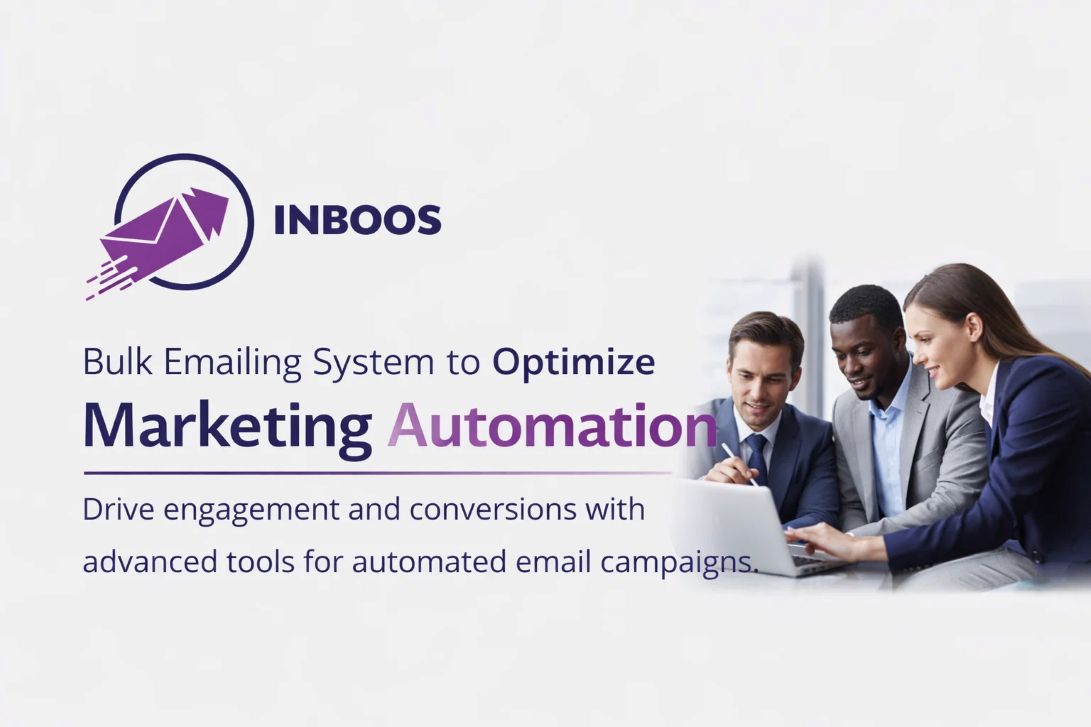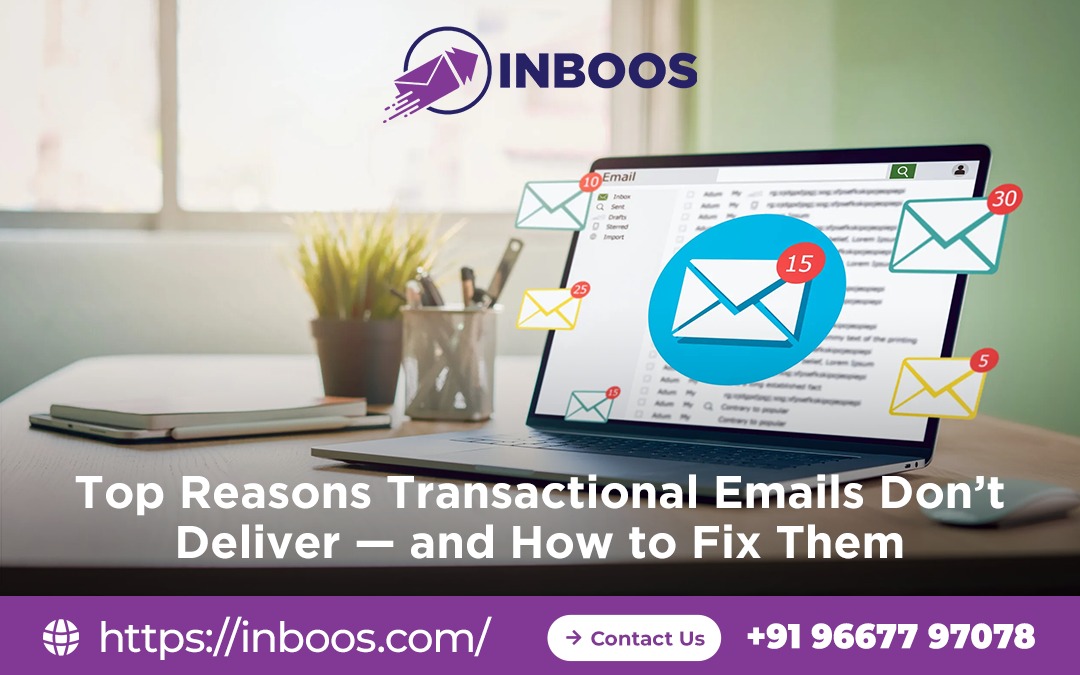Transactional emails are the unsung heroes of customer communication. From order confirmations and shipping updates to password resets and account verifications, these aren’t just polite messages; they’re mission-critical communications that directly impact customer experience, trust, and even your bottom line. When they don’t deliver, it’s not just an inconvenience—it’s a problem that erodes trust and can disrupt essential business processes.
So, what happens when these vital messages fail to reach the inbox? And more importantly, how can you ensure they always hit their mark?
Why Your Crucial Transactional Emails Might Be Failing
Several factors can prevent your transactional emails from reaching their intended recipients. Understanding these pitfalls is the first step toward fixing them.
1. Poor Sender Reputation
Your sender reputation is like a credit score for your email. Internet Service Providers (ISPs) like Gmail, Outlook, and Yahoo assign a score based on your sending habits. A low score means your emails are more likely to be flagged as spam or blocked entirely.
- Common Causes: High bounce rates, frequent spam complaints, sending to unengaged lists, sudden spikes in sending volume, or even being associated with previous spamming activities.
2. Blacklisting
If your IP address or domain gets listed on a public blacklist, it’s a major red flag for ISPs. This can happen due to spam complaints, sending malware, or other malicious activities, even if unintentional.
- Common Causes: Accidental spam traps, sending too many emails to invalid addresses, or poor list hygiene.
3. Lack of Proper Authentication (SPF, DKIM, DMARC)
Email authentication protocols like SPF (Sender Policy Framework), DKIM (DomainKeys Identified Mail), and DMARC (Domain-based Message Authentication, Reporting & Conformance) are vital. They verify that the email actually came from your domain and hasn’t been tampered with. Without them, or with incorrect setup, your emails look suspicious.
- Common Causes: Incorrect DNS records, missing entries, or using an email service provider that doesn’t fully support these protocols.
4. Content that Triggers Spam Filters
Even transactional emails can trigger spam filters if their content resembles promotional spam. This includes certain keywords, excessive links, poorly formatted HTML, or a lack of plain text alternatives.
- Common Causes: Using “salesy” words, large images without accompanying text, or an imbalanced text-to-image ratio.
5. High Bounce Rates (Hard and Soft Bounces)
- Hard Bounces: Indicate a permanent delivery failure (e.g., invalid email address, domain doesn’t exist). A high number signals a bad list and can damage your sender reputation.
- Soft Bounces: Indicate a temporary delivery issue (e.g., recipient inbox is full, server is down). While temporary, too many can still hurt your reputation.
- Common Causes: Outdated email lists, typos in email addresses, or unmanaged subscriber lists.
6. Inconsistent Sending Volume or Activity
ISPs prefer consistent sending behavior. Sudden, large spikes in email volume from a previously low-volume sender can look suspicious and trigger spam filters.
- Common Causes: Irregular campaign schedules, or scaling up email operations too quickly without proper warm-up.
How to Fix Transactional Email Deliverability Issues
Ensuring your transactional emails reliably land in the inbox requires a proactive and intelligent approach. Here’s how to address the common pitfalls:
1. Prioritize Sender Reputation Management
- Maintain Clean Lists: Regularly remove invalid, bounced, and unengaged email addresses.
- Monitor Feedback Loops: Sign up for FBLs with major ISPs (if your email service provider doesn’t do it automatically) to be notified of spam complaints and remove those users immediately.
- Encourage Engagement: While transactional, ensure messages are clear, valuable, and easy to understand, reducing the likelihood of complaints.
2. Implement Robust Email Authentication (SPF, DKIM, DMARC)
- Verify Setup: Ensure your SPF, DKIM, and DMARC records are correctly configured in your DNS settings. These tell receiving servers that your emails are legitimate.
- Use a Reputable Provider: Choose an email service provider that automatically handles or guides you through the proper setup of these critical authentication protocols.
3. Optimize Email Content for Deliverability
- Keep it Clean and Concise: Transactional emails should be brief, to the point, and clearly state their purpose. Avoid excessive imagery or promotional language.
- Balance Text and Images: Don’t rely solely on images. Ensure your content is predominantly text-based.
- Avoid Spam Trigger Words: Words like “free,” “guarantee,” or excessive exclamation marks can sometimes trigger filters.
- Use Clear Subject Lines: Make it obvious what the email is about (e.g., “Your Order #1234 Confirmation,” “Password Reset Request”).
4. Practice Impeccable List Hygiene
- Validate Emails: Use email validation services to clean your lists of invalid addresses before sending.
- Regularly Purge Inactives: While transactional, persistently bounced emails should be removed.
5. Strategize Sending Volume & IP Warm-up
- Consistent Volume: Aim for consistent sending patterns.
- IP Warm-up: If you’re new to high-volume sending or using new IPs, follow a structured IP warm-up plan. This involves gradually increasing your sending volume over time to build a good reputation with ISPs.
6. Leverage AI for Proactive Deliverability Management
This is where advanced technology truly shines. An AI-powered email marketing service can transform your deliverability efforts:
- AI-Driven Content Analysis: AI can automatically scan your email content for potential spam triggers before sending, providing real-time recommendations for improvement.
- Predictive Reputation Monitoring: AI constantly monitors your sender reputation and IP health, identifying potential issues and alerting you proactively.
- Intelligent IP Rotation: For high-volume senders, AI can intelligently manage and rotate IP addresses to optimize sending performance and maintain a healthy reputation across diverse networks.
- Automated Bounce & Complaint Handling: AI systems can automatically process bounces and unsubscribe requests, keeping your lists clean and minimizing negative impacts on your sender score.
At Inboos.com, our AI-powered Email Marketing & CRM platform is built to address every deliverability challenge head-on. We specialize in ensuring your mission-critical emails — from order confirmations to account alerts — reliably land in the primary inbox, not the spam folder.
Our platform leverages cutting-edge AI with enterprise-grade infrastructure to provide:
- Enhanced Deliverability & Proactive Spam Prevention: Our AI actively manages your sender reputation and optimizes content for inbox placement.
- Intelligent IP Rotation & Warm-up Plans: We guide you through or manage the complexities of high-volume sending.
- Comprehensive Email Authentication Support: Ensuring your SPF, DKIM, and DMARC are perfectly set up.
- Actionable Analytics: Insights that help you maintain a healthy email ecosystem.
Beyond the technology, we offer live, in-person support for domain setup, IP rotation, campaign optimization, and more, making sure you have expert guidance every step of the way.
Don’t let vital communications get lost. Ascend to Smarter Marketing with Inboos.com and ensure every email delivers.
 logo
logo





